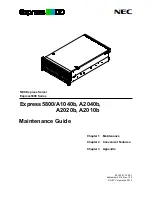
Notes
You can use any combination of alphanumeric characters, underscore (_), hyphen (-), and pound (#) for
the names. Names can have a maximum of 30 characters.
The identifier of a snapshot image has two parts separated by a colon (:):
• The name of the snapshot group.
• The identifier of the snapshot image.
For example, if you want to create a read-only virtual disk named
engData1
using the most recent
snapshot image in a snapshot group that has the name
snapGroup1
, you would use this command:
create snapVirtualDisk userLabel="engData1" snapImageID="snapGroup1:newest"
readOnly;
Create Remote Replication
NOTE: This command is valid only with Fibre Channel storage arrays.
Description
This command creates both the primary virtual disk and the secondary virtual disk for a remote
replication pair. This command also sets the write mode (Synchronous or Asynchronous) and the
synchronization priority.
Syntax
create remoteReplication primary=
”
primaryVirtualDiskName
”
secondary=”
secondaryVirtualDiskName
”
(remoteStorageArrayName=”
storageArrayName
” |
remoteStorageArrayWwn=”
wwID
”)
[remotePassword=”
password
”
syncPriority=(highest | high | medium | low |
lowest)
autoResync=(enabled | disabled)
writeOrder=(preserved | notPreserved)
writeMode=(synchronous | asynchronous)]
Parameters
Parameter
Description
primary
The name of an existing virtual disk on the local
storage array that you want to use for the primary
virtual disk. Enclose the primary virtual disk name in
double quotation marks (“ ”).
secondary
The name of an existing virtual disk on the remote
storage array that you want to use for the
secondary virtual disk. Enclose the secondary
virtual disk name in double quotation marks (“ ”).
179
Summary of Contents for PowerVault
Page 1: ...Dell PowerVault Modular Disk Storage Arrays CLI Guide ...
Page 26: ...26 ...
Page 50: ...50 ...
Page 76: ...76 ...
Page 86: ...86 ...
Page 96: ...96 ...
Page 110: ...110 ...
Page 122: ...122 ...
Page 132: ...132 ...
Page 388: ...388 ...
Page 392: ...392 ...
















































